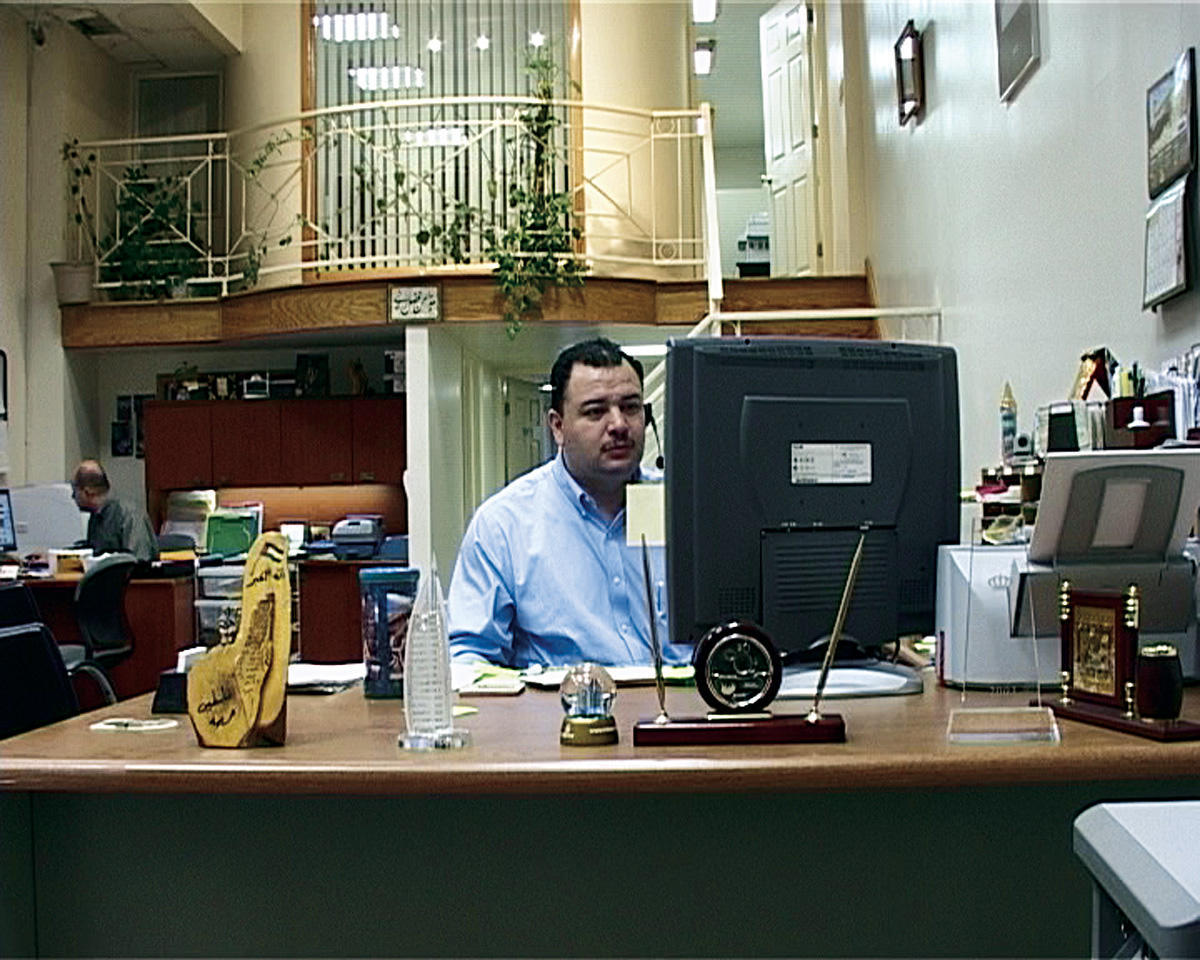
New York
Emily Jacir: Accumulations
Alexander and Bonin
February 26–April 9, 2005
Full disclosure: I’ve saved every email I’ve ever received (4,952 of them, stored in folders), and I have on occasion read others’ mail (no password-stealing, just a few sidelong glances at Kinko’s or on an airplane). So I was favorably predisposed to Emily Jacir’s first solo exhibition at Alexander and Bonin, accumulations. The young Palestinian-American artist apparently saves her email too, and for Inbox (2004–’05), the centerpiece of the show, faithfully reproduced forty-five of them in oil paint on wooden panels. Although the look is neo-conceptualist cool, the content is by turns vitriolic, amusing, heartrending; I read every word, and imagine many a less snoopy viewer did also.
The panels, like email printouts, are 8.5” x 11”, black and white, with tiny Courier print. Everything is there, from the to-from-date-subject header and the message to parts usually overlooked — the “terms of use” footer, the Yahoo smiley faces, and University of Phoenix pop-up ads. Arranged in a chronological wrap around the gallery walls, they span a period from June 2000 until a few months ago, and comprise a representative sample of most of our inboxes: notes from friends, announcements and news stories, the odd spam. Jacir’s correspondents are motley and international — she currently splits her time between New York and Ramallah — and much of the mail pertains directly to events in the Middle East: bulletins from the Arab-American Anti-Discrimination Committee; news of bombings in the West Bank; the story that Israeli soldiers have raided a zoo in Gaza, killing animals. Some messages inspire less sobriety than cringing, such as the information that Sam’s Club is selling globes on which Palestine is marked as a country, or the solicitation for a romantic rendezvous on arablove.com. Others are apolitical, everyday — a letter about a breakup, a Happy New Year wish, a request to help out a friend.
The messages in Inbox, like cyberspace itself, speak of dislocation and displacement, but a connective tissue, however fragile, emerges: This work, like several of Jacir’s projects, was created in part by others. For Memorial to 418 Palestinian Villages That Were Destroyed, Depopulated and Occupied by Israel in 1948 (2002), the artist opened her New York studio and invited volunteers to assist her in completing the work of sewing the names of those 418 villages on a burlap tent of the sort distributed by the Red Cross. Jacir’s handmade, collaborative aesthetic allows her to avoid the heavy-handedness to which other work that addresses the Palestinian diaspora (Rashid Masharawi, Mona Hatoum) occasionally falls victim. I missed this sense of community in the exhibition’s other work, a thirty-eight minute video installation titled Ramallah/New York (2004), which features footage of various workaday places in each city — bars, hair salons, travel agencies, shawarma shops. That it’s not always possible to determine which city is on which screen (they alternate back and forth, left and right) may testify to global movement and exchange, but a sense of fluidity is compromised by the two channels, frequent intercuts, and overlapping dialogue. Then again, perhaps this is Jacir’s point: Ramallah and New York are that far apart.
What effect art can have in and on this broken world is a question that threads through Inbox. “I have not made one piece of art,” a friend worries, and another person inquires, “I noticed for the past month and a half that you’ve been very busy with public demonstrations and political manifestations. Are you doing art?” The query is misguided; political commitment is not separable from art-making for Jacir. Her best-known work is Where We Come From (2001–03), a multimedia installation for which she asked twenty-seven Palestinians, “If I could do anything for you anywhere in Palestine, what would it be?” Fulfilling the wishes — visit my mother’s grave, play soccer with the first boy you meet in Haifa, go on a date with a woman I’ve only spoken to on the phone — to the best of her abilities, she documented her activities in photos, text, and DVD. Granting many of these requests would likely be impossible today; perhaps the Internet’s de-territorialized ethereality is a last site of resistance, at least for now. One postscript to an email reads, “I hope they’re not spying on my or your emails. Tell me if I shouldn’t write this stuff to you.”